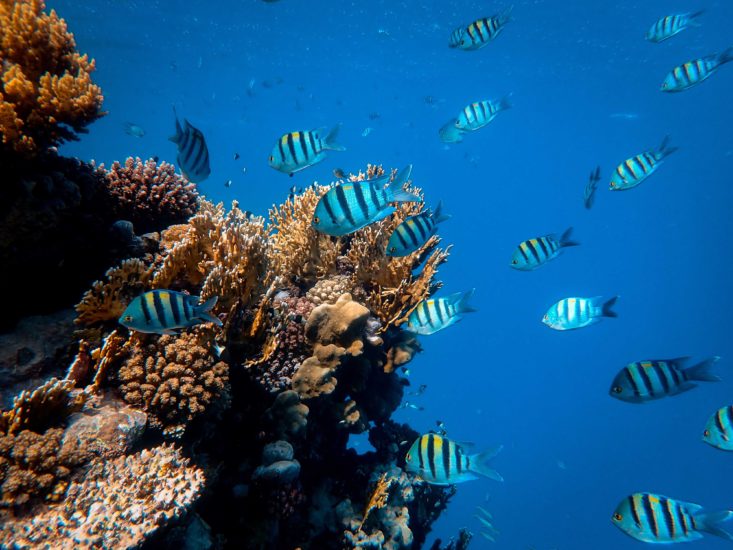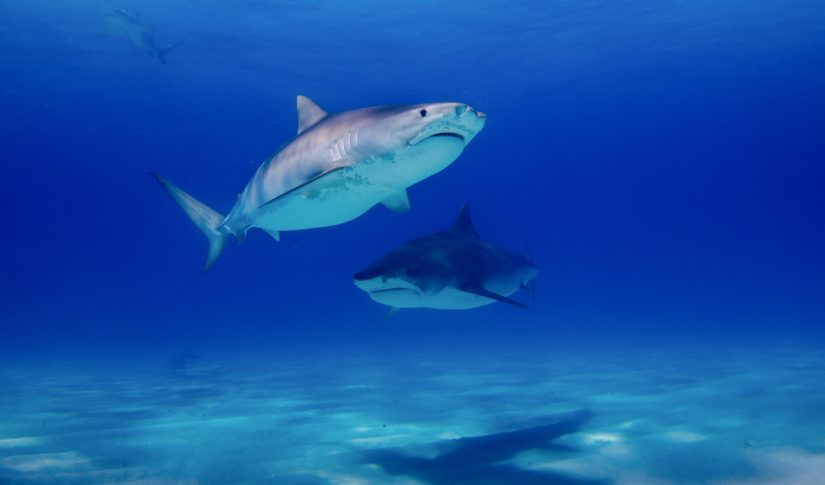
On June 8 every year, we mark World Oceans Day.
The celebration encourages everyone around the world to come together to protect and restore our oceans, which are so vulnerable to pollution and the effects of climate change.
This year, we’re pleased to share this collection of spectacular photographs collated by holiday company My Late Deals, which highlight some amazing undersea flora and fauna.

A barracuda off the coast of Belize.
Barracuda
Barracudas are one of the fastest fish in the sea with an estimated speed of 36mph. The biggest threats to barracudas are recreational fishing and the barracuda meat trade.

A giant whaleshark in the Maldives.
The whale shark
Although giant, whale sharks are friendly fish that pose no threat to humans. The International Union for Conservation Of Nature (IUCN) currently lists the whale shark as a vulnerable species.
Many nations continue to hunt regardless.

A great white shark near Guadalupe Island, Mexico.
Great white shark
Great whites are the largest predatory fish on Earth.
These sharks can grow to an average of 15 feet in length.
The IUCN considers them a vulnerable species.

A school of spinner dolphins close to Molokini Island in Hawaii.
Dolphins
Skilled acrobats, spinner dolphins are often seen jumping out of the water performing complicated aerial manoeuvres.

A shoal of fish swimming near Amed Beach in Indonesia.
A shoal
When fish (or other aquatic animals) swim in a cluster, it’s called a shoal.
Marine biologists think fish do this to confuse their predators and to save energy.

A turtle swimming gracefully in Roatán, Honduras.
Sea turtles
Six of the seven sea turtle species are sadly classified as threatened, endangered, or critically endangered.
This is largely due to pollution and climate change and hunting and fishing.

Chuuk’s Lagoon’s coral reefs.
Coral reefs
Chuuk Lagoon is surrounded by a 225-kilometre barrier reef and is home to dozens of ships and aircraft that sank in 1944.
Coral now covers the wreck site, which serves as an underwater museum.

Colourful corals in Koh Lipe, Thailand.
The reefs in Koh Lipe are thriving with soft and hard corals and various marine life.
Here you’ll find a range of macro critters including nudibranchs, ghost pipefish, seahorses and Frogfish.

Crystal clear waters, stunning corals and reef fish at Sumilon Island, Cebu, Philippines.

School of fish and colourful coral in the Red Sea, Egypt.
The coral reefs found in the Red Sea are known for their extraordinary heat tolerance and resistance to rising sea temperatures.
However, development, overfishing and disease threaten many reefs.
Sumilon is famed for its hard and soft corals of diverse species. Marine life that lives here include blue-spotted stingrays and cuttlefish.

Up close with a Lionfish in Dahab, Egypt.
Lionfish
Lionfish are well known for their venomous fin spines, which can cause painful (but rarely fatal) puncture wounds. Each species also bears zebra-like stripes.
The lionfish is considered an invasive species after they quickly spread their geographic ranges in the early 21st century.
This disrupted the balance of ecosystems and threatened the well-being of coral reefs and other marine ecosystems.
Science agencies are working hard to stop further spread and control the existing population.

Lemon sharks in the Bahamas.
The lemon shark
With a distinct yellow colour on its skin, the lemon shark is a powerful underwater predator.
The IUCN lists the lemon shark as near threatened.
Commercial fishers sell and trade the shark’s fins and meat.

Mandarin Fish in Lembeh Strait, Indonesia.
The mandarin fish
The Mandarin fish may be beautiful, but they use both poison and a revolting smell to keep predators away.

A manta ray of Puerto Vallarta, Mexico.
Manta rays
Manta rays are highly intelligent, highly threatened and the largest rays in the world. Their greatest threat is overfishing.

Master of camouflage. An octopus found in Bonaire’s waters.
Octopuses
Octopuses are incredibly intelligent animals. They have developed a range of tricks (evolved over tens of millions of years) to thwart would-be attackers.
Though not under threat, they are sensitive to pollutants.

An orange and white clownfish hiding in sea anemone in Indonesia.
The clownfish
Clownfish are all born male but can change their sex.
They only usually change to become the dominant female.

Two tiger sharks in the Bahamas.
Tiger sharks
Humans hunt tiger sharks for their fins, flesh, skin and livers.
As a result of very low repopulation rates, the ICUN lists them as near threatened.

Yellow and Purple Starfish in a coral reef in Puerto Vallarta, Mexico.
Starfish
Marine scientists have undertaken the tough task of swapping the starfish’s name to sea star because the starfish is not a fish.
For more information on World Oceans Day, click here.
For more fantastic features from “The People’s Friend”, click here.




